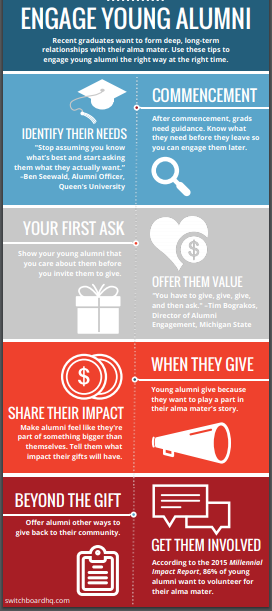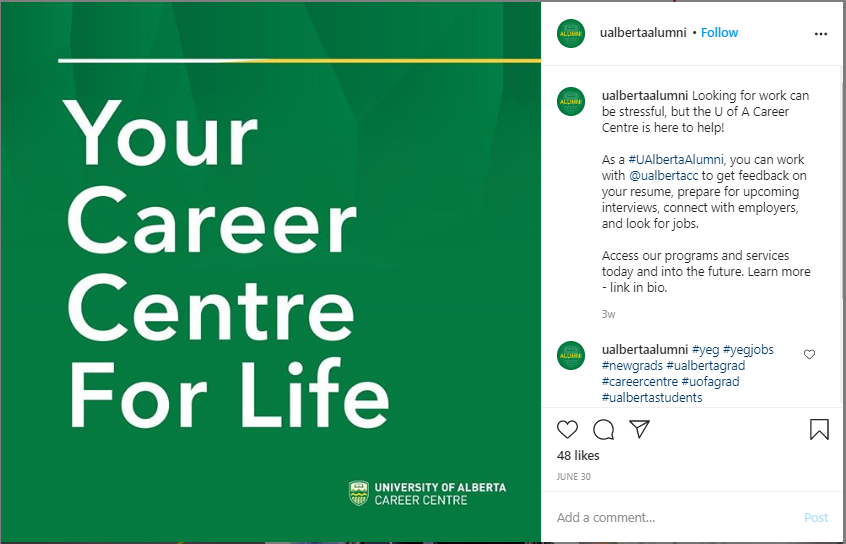HIGHER EDUCATION - ATTRACT, ENGAGE AND ACTIVATE ALUMNI DURING THIS GLOBAL CRISES AND IN THE FUTURE
This week’s The Provocateur welcomes guest blogger and ViTreo Senior Consultant & Regional Director, Edmonton and Northern Alberta, and Alumni Relations expert, Gina Wheatcroft. Gina speaks about how alumni engagement must evolve in the face of recent global events.
Gina joined the ViTreo team after spending six years with The University of Queensland (UQ) and 16 years in Alumni Relations with the University of Alberta. Gina has extensive experience in cultivating multi-million dollar donors; making the case for alumni relations and influencing decision-makers; recognizing, hiring and training advancement talent; and, successfully managing volunteers and boards for maximum impact and sustainability.
HIGHER EDUCATION - ATTRACT, ENGAGE AND ACTIVATE ALUMNI DURING THIS GLOBAL CRISES AND IN THE FUTURE
Do The Fundamentals Of Alumni Engagement Need To Change?
Gina Wheatcroft, ViTreo Group
July 28th 2020
Having spent a number of years being responsible for leading and building alumni and community relations programs for many years at the University of Alberta and later at The University of Queensland, Australia (UQ), I’ve been in a position over the past two decades to initiate and observe significant changes in the types and level of engagement by graduates in higher education. Most recently, I have both observed and advised on the acceleration of virtual engagement caused by COVID-19 and the need to physically distance in order to continue meeting the needs of alumni. I’m also seeing some higher education institutions reviewing workplace inclusion and diversity in addition to addressing the much needed attention on discrimination in alumni programming plus the formation of new chapter volunteer groups after the tragic death of George Floyd.
Major shifts are occurring for alumni associations. The Coronavirus pandemic and the death of George Floyd have impacted everyone on a global level. What will this mean for alumni engagement?
ALUMNI ENGAGEMENT ON AN ONGOING BASIS
Because involved alumni are such a critical component and are the most valuable ambassadors of educational institutions, elevating their engagement is and should always be a priority. But how should institutions do this? Resources are scarce and the demographics of alumni vary, so meeting needs and marketing the ‘right’ programs takes creativity and a concentrated effort, one that needs to align with the college or university’s engagement strategies.
“At a time of major change for alumni associations, there is not a one-size-fits-all solution, and there are numerous legacy issues related to traditional approaches practiced over decades. Yet in this context, alumni associations are rethinking and, in some cases, radically changing, their longstanding models for programs and services, organizational structures and relationships with their colleges and universities. Alumni needs, interests and approaches to their alma mater’s relevance to their lives are changing; at the same time, institutions are more strategically embracing the opportunities and benefits of alumni relations to engage their largest and most enduring constituency.”
ALUMNI ENGAGEMENT DURING A CRISIS
As The Napa Group says, one-size-fits-all is not a solution. Alumni offices need to revisit traditional engagement efforts to be more innovative to meet growing alumni populations with limited budgets and to significantly make a difference to a university’s priorities.
When COVID-19 hit North America and the world causing institutions of higher education to ‘close their doors’, alumni offices were forced to revisit their engagement efforts. For many, this was a welcome opportunity to evaluate, prioritize and revise initiatives and activities. It was much easier to finally end programs, regardless of tradition or sentiment, that had not been meeting goals pre-COVID. As alumni offices continue to plan three to six months out taking into consideration various global events and pandemic scenarios, programs will continue to be revised and revised again, but ultimately the fundamentals and the mission of alumni engagement remains the same. Attracting and engaging alumni volunteers, for example, will and should continue, even if only virtually.
Higher education institutions are, or should be, considering how they manage diversity and inclusion in their workforce. As an example, Alumni University of British Columbia (UBC) will be hosting this webinar on August 19 2020:
Webinar – Leading Diversity and Inclusion
“Diversity and inclusion (D&I) at work is more important now than ever before. Stories of anti-Asian sentiment and harassment, women’s career struggles while balancing work and family during COVID-19 lockdowns, and protests in support of #BlackLivesMatter are now part of the daily news headlines. These issues are creating renewed emphasis and heightened importance on the ways in which organizations manage diversity and inclusion in their workforce.
Attendees will gain a deeper understanding of the ways in which organizational practices and policies have either weakened or supported D&I efforts as well as explore how the COVID-19 pandemic may have exacerbated the problems for certain groups of employees. Furthermore, attendees will leave with ideas and directions on how they can contribute to a more diverse and inclusive culture in their own organizations.”
- Alumni UBC, Webinar - Leading Diversity and Inclusion (register here)
SO…’TURN OF THE CENTURY’
Alumni are busy, especially career alumni and those who are home-schooling little ones during the pandemic. How can we best engage their volunteer efforts in an impactful way for their alma mater to be one in which they will have a positive experience?
One of the first traditional practices I have seen depart is the deployment of alumni as ‘social conveners’, volunteers on committees, boards and councils and at events. Remember happy hours, reunions, having to staff information tables and asking alumni to act as greeters? Today’s alumni would probably say, “Hmm…greeter? I think my mom used to do that…or maybe it was my grandfather??”
“The New Rules of Engagement
Today’s alumni want to go ‘all in’ as donors and volunteers with the causes they care about. In this increasingly competitive philanthropic landscape, simply invoking loyalty and duty to one’s alma mater isn’t effective.”
BRINGING ALUMNI ENGAGEMENT INTO THE 21ST CENTURY
There has been an enrollment boom so alumni populations are large. So, how do we create a strategy that will attract, engage and activate this large cohort of constituents? According to EAB, two actions we must take are to “break from the over-reliance on in-person engagement and re-scope volunteer roles to meet Millennial needs.” (EAB, Reimage Constituent Engagement for the 21st century, as of 2020-07-28)
With virtual engagement and digital programming having accelerated like never before, the time is now to attract and engage this cohort. If you offer relevant programming and they have access to the internet, you could increase not only your level of participation at ‘events’ but also your level of volunteerism because you can attract alumni from all over the world. The key is to offer relevant ‘programming’ especially when many are beginning to feel virtual or screen fatigue. And, the way to ensure you are offering relevant programming is to ask, test and ask again.
FUTURE TRENDS AND BEST PRACTICES
If we want to increase the number of alumni volunteers and amplify their impact to a university, we should provide them with opportunities that suit them. Clearly defined volunteer projects with flexible timelines will encourage alumni to get involved. Longwood University has an excellent online volunteer program that offers time bundles to choose from starting at 15 minutes. In exchange for volunteer time, alumni receive points to redeem for University merchandise.
"Alumni surveyed nationally consistently report that the reputation of alma mater and the increasing equity of their diplomas are key motivators for connectivity. They seek to connect through career, social, and business networking provided by alumni associations. They are interested in learning more about their institution’s academic strengths, how it educates graduates for careers, exciting developments in student-faculty collaborations and research, and opportunities to be exposed to new things and be prepared for a complex and changing world.”
- NAPA Group, Trends and Best Practices in Alumni Associations, January 2015
Alumni supporting students and other alumni through student recruitment and retention, career support, mentorship, access to building a network and alumni cultivation are the current best practices which make a difference to both alumni volunteers and their institutions. We’ve seen how this succeeds with UQ’s creation of a Young Alumni Advisory Board; the development of Career Discovery Tours at Ripon College; and Trinity University’s use of volunteers to help with student enrollment. UBC also offers an excellent online career platform, which is especially helpful during this pandemic. With many alumni losing jobs and/or looking for employment including summer employment, this is an opportune time for alumni to help one another.
Instagram Photo from the University of Alberta (UofA) Alumni page sharing how their career centre is available to all alumni for life.
These are some strategies for alumni relations offices to incorporate into accomplishing institutional mission as well as activities with tangible outcomes for the institution. Aligning volunteer engagement with institutional priorities with reference to development, career services, and admissions reinforces how important alumni relations is to achieving the institution’s mission.
How was your alumni office involved with students during the start of school closures? These are future alumni who will recall how they were treated by their colleges or universities during the pandemic. Was your alumni office present and helping when students were rushing to move out of residences? Did your alumni office or alumni association set up an emergency student fund or relief fund especially for displaced international students? Is your alumni executive leadership offering alumni perspectives at discussions about career services, current or continuing education programming or fundraising. How will your alumni team respond and emerge from today’s crisis or challenges?
What has been the impact of the protests for your institution? What steps has your alumni association taken to ensure diversity and inclusion in its workforce?
Pivoting operations in a time of crisis is critical. This requires bold alumni offices who reshape and refine their strategy through creativity and innovation and who are not afraid to take risks, try and test new ideas and programs. This requires leadership to stay authentic, be transparent and stay close to their alumni and continuously check in and ask about alumni needs so they can respond.
How are you engaging and involving your alumni in creative and impactful ways? What programs have you cancelled? What programs/events have increased in attendance because they became virtual? Are your alumni volunteers more engaged now? Have you increased your alumni giving? We would love to hear your ideas and strategies for improving alumni engagement — please share in the comments below.
We must meet our constituents’ needs and tailor our approach to them, not the other way around.
ViTreo can help with your Advancement, Alumni Relations and Engagement programs, call or email us to schedule a free 30 minute consultation with one of our experts. Contact us today!
ABOUT THE AUTHOR
Gina Wheatcroft, Senior Consultant & Regional Director, Edmonton and Northern Alberta
ViTreo Group Inc
Gina joined the ViTreo team after spending six years with The University of Queensland (UQ). When Gina started at UQ, she was was responsible for leading and building alumni and community relations. Most recently, Gina was the Executive Director for UQ's US foundation where she led fundraising and strategic planning. Previous to working for UQ, Gina worked in alumni relations for 16 years at the University of Alberta.








